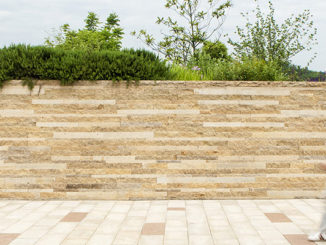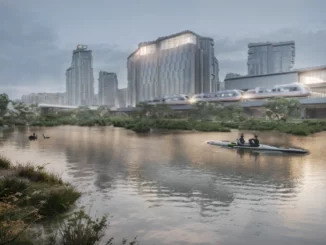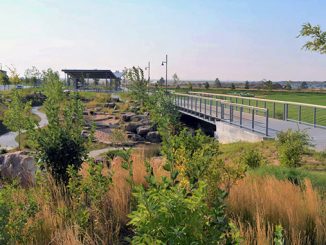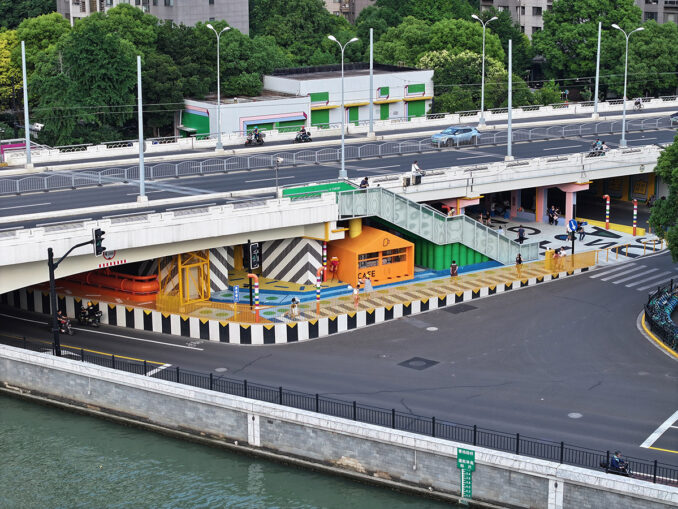
Shanghai Super Tube is a public passage space that we specially transformed under the bridge of Suzhou River. Although it just opened on New Year’s Day 2024, it has already become one of the must-visit places for young people. Located at the intersection of two main roads on the east side of Changning District in downtown Shanghai, underneath the main traffic bridge Cao Yang, the project serves as a gateway to the three major administrative districts in Shanghai.
As a large metropolis, Shanghai faces the dual challenge of inadequate quantity and low quality of public spaces, as well as the increasing demand for high-quality public spaces from the population, all within the constraints of high population density and limited environmental resources. To address these challenges, Shanghai has actively implemented urban renewal, shifting from incremental construction to improving existing infrastructure. It focuses on the previously neglected “space under the bridge,” effectively utilizing and revitalizing the gray space under bridges through renovation and updates to meet the needs of citizens and activate the space. These exploratory practices in Shanghai can provide exemplary guidance and solutions for developing high-density spaces in global metropolises.
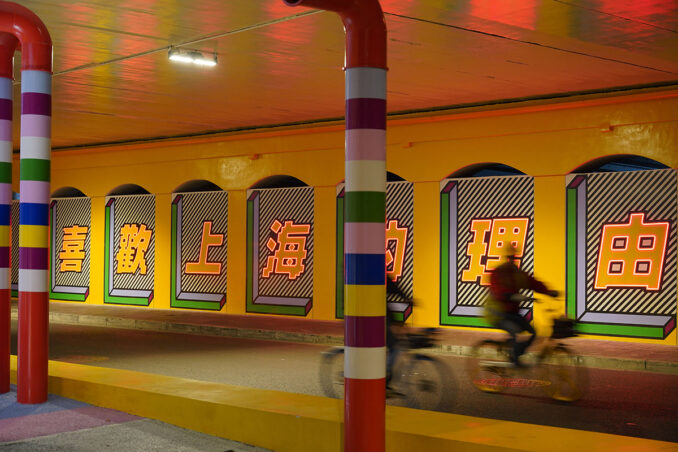
As a space under the bridge, the site has been closed for many years, with surrounding walls built around it, resulting in mixed traffic of pedestrians and vehicles and inconvenient transportation, as well as safety hazards. In addition, the top of the site is covered by the bridge, with a low clearance height, creating a sense of oppression and closure, lacking highlights, and difficult to attract popularity. On the other hand, the Suzhou River, as the mother river of Shanghai, is a cultural symbol of great social value for the people of Shanghai. The space under the bridges along the Suzhou River has served as the information exchange center and commodity trade center for surrounding communities since the 1980s. However, the site, before the renovation, gradually lost the imprint of traditional community culture along the Suzhou River.
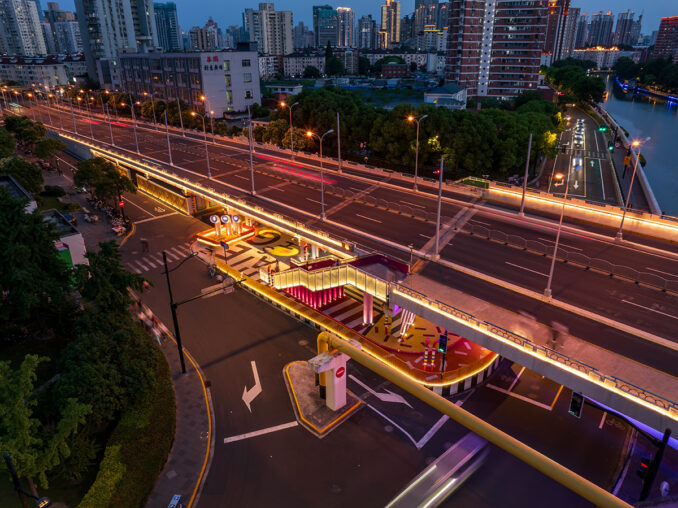
Based on this, the purpose of this transformation is not only to provide convenient transportation for daily travel but also to integrate the local cultural atmosphere and achieve the cultural metamorphosis of infrastructure for people of all ages. Taking inspiration from a yellow municipal gas pipe that remained on-site, the design team used the combination of “pipes” and “colors” as a clever way to break through the problem. The former is a representative element of the industrial history along the Suzhou River and even in modern Shanghai, while the latter is the choice to change the shady and gloomy atmosphere of the space under the bridge.
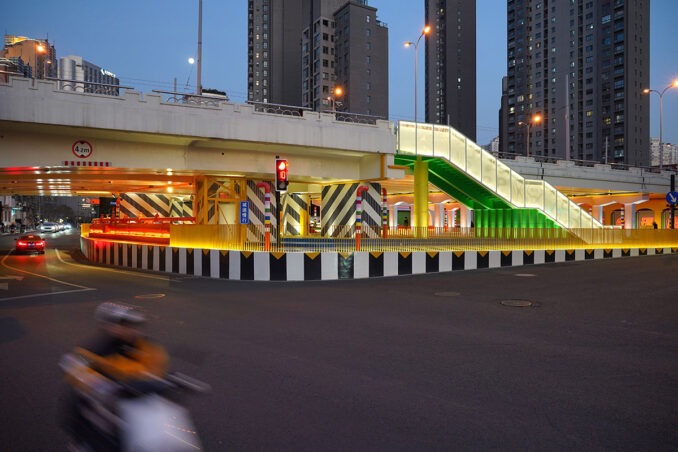
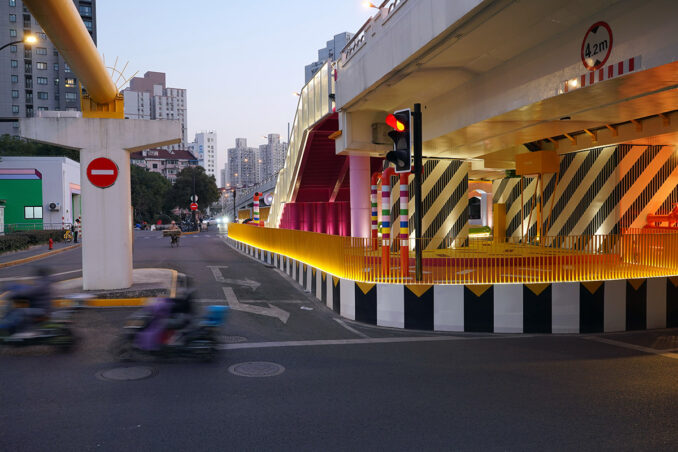
Functionally integrated field infrastructure
The original site only served as transportation infrastructure with a single function. The renovated Shanghai Super Tube opens its walls, activates the gray space with highly saturated art graffiti, and transforms it into a distinctive gateway showcase space, forming a continuous pedestrian node along the main road of Changning District with nearby parks and plazas. The team cooperated with owners planning a series of community services on the site, such as trendy cafes and convenience stores, etc., which not only stimulate the economic growth of the surrounding community but also promote community vitality, increase convenience for residents’ daily use. This new form of overlaying public services with urban infrastructure realizes the exploration of a new model for urban infrastructure transformation and renewal.
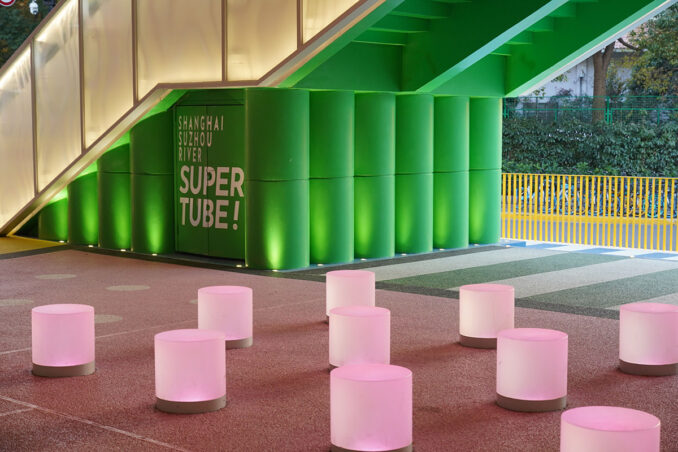
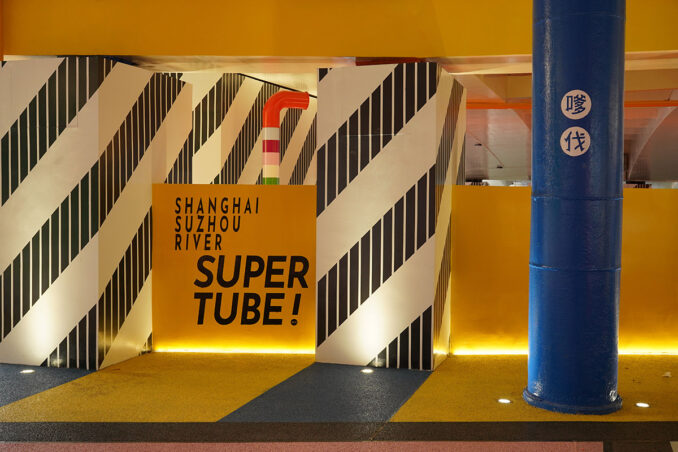
When “Memphis” meets industrial memories
To recreate the imprint of factory life in the communities along the Suzhou River in Shanghai, the design team specially installed a batch of discarded industrial pipelines and surprisingly transformed them into design. The element of “pipeline” becomes an ubiquitous design vocabulary in the site, and these elements not only have a sculptural sense and functionality but also pay tribute to the silhouette of Shanghai’s industrial history, such as storage tanks, paint cans, beer barrels, and vacuum tubes. Bold color is a key technique to change the original dim atmosphere of the site under limited conditions. The dramatic artistic effect formed by these patterns pays tribute to the timeless classic “Memphis style”, which represents the attitude of daring imagination, breaking conventions, and fearless optimism that we hope to convey to users through our work. The design of the painted slogans also caters to the needs of young people to check in and provides them with space and materials for their photo-sharing activities. The rough industrial pipelines and language graffiti in local dialects also create different effects.
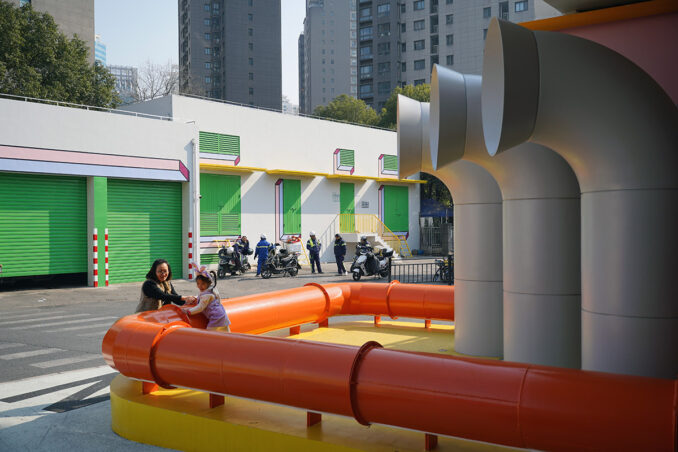
A stage for young people’s free-style performances
With the installation of colors and graffiti, elements such as pipes, seatings, and fences embellish, fill, and redivide the space, and the combination with dazzling lights increases the interactivity and recognizability of the space, while also transforming the dark space under the bridge into a public stage. Young people perform various forms of improvisation here, such as street dance, bands, skateboarding, and so on. The distinctive site brings unlimited inspiration to young people and provides them with a free and versatile space to showcase themselves, unleash themselves, and sweat their youth, creating a positive cycle of increasing popularity and vitality, and becoming a fertile ground for nurturing art.
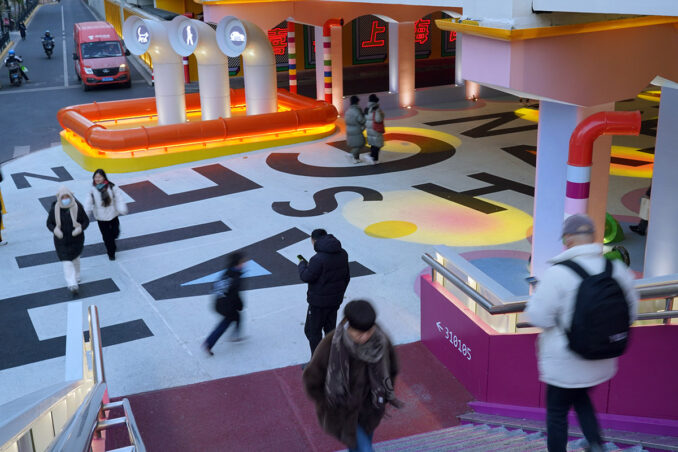
SHANGHAI SUPER TUBE
Location: Intersection of North Jiangsu Road and Wanhangdu Road, Changning District, Shanghai, China
Client: Changning District Construction Management Committee
Design Team: FISH DESIGN
Consultant: FISH ART LAB, ECO-SMART LAB of Tongji University, RUIQIAO CIVIL ENGINEERING CONSULTANTS CO.LTD
Constructor: Shanghai Jinlu Construction
Photography: FISH DESIGN

